It’s easy and fun to do! Get your kids involved and have a great weekend!
Kenn Kaufman’s Field Guide to Birds of North America, one of the best and easiest field guides to use, sells on my website for over $19. But guess what? You can win this guide, along with his other four guide books, if you belong to the 10000 Birds Conservation Club!
Now, you don’t have to be a mathematics genius to figure out that the $25 it costs to join this ingeniously designed conservation club is nothing compared to the dividends you will enjoy from the give-aways. Five excellent guide books from Kenn at around $20 each is worth $100. If you’re one of the three winners, you’ve quadrupled your money back in one fell swoop! (Aren’t you glad I did the math for you?).
The thing is, the give-aways are just a bonus. The most important thing about the club is that “feel good” feeling you get knowing that you are helping important conservation efforts around the world.
You can get all the details on Kaufman’s Give-Away at 10000 Birds. When it comes right down to it, I think we can all afford $25 to make a difference in our lives and the lives of generations to come. How about it?
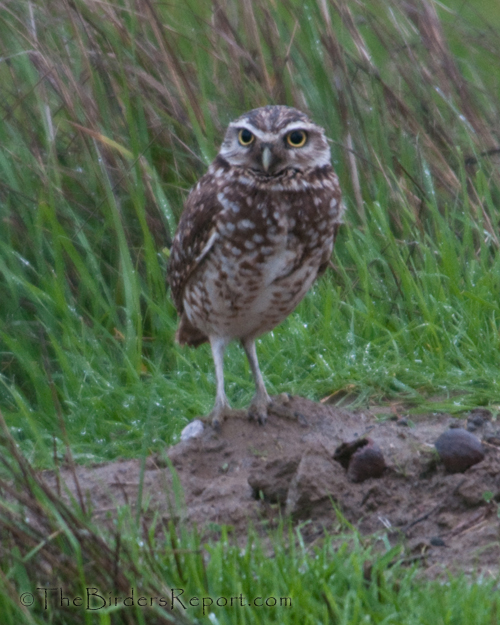 Burrowing Owl photo by Larry Jordan
Burrowing Owl photo by Larry Jordan
If you are concerned about the conservation of bird species in the world and more specifically Burrowing Owls in California please download the Guidance for Burrowing Owl Conservation and read this document. It has been sitting on a desk at the California Department of Fish and Game for at least two years.
This document, dated April 14, 2008, opens with the following statement, “Additional immediate protection is needed for the Burrowing Owl (Athene cunicularia), a vulnerable California Bird Species of Special Concern (Gervais et al. 2008) and federal Bird of Conservation Concern (U.S. Fish and Wildlife Service 2002), that was the subject of a listing petition to the State of California Fish and Game Commission in 2003. Most Burrowing Owl populations in California still face the same primary threats they did three decades ago (Gervais et al. 2008). Burrowing Owl population declines continue, primarily caused by habitat loss and control of California ground squirrels (Spermophilus beecheyi) and other host burrowers.”
The California Department of Fish and Game (CDFG) has been promoting this decline by giving the go ahead to developers who discover Burrowing Owls on the property where they want to build their homes. The developer hires a wildlife biologist to create an “eviction plan” which goes to the CDFG for approval. What does the plan contain? A method to evict the owls, demolish their burrows, and kill all the remaining ground squirrels to make sure the owls (which have a very high degree of nest site fidelity) have no place to return to (download the eviction plan for the recent Antioch burrowing owls at Blue Ridge (1.4 MB) to see what I’m talking about).
This is just one example of Burrowing Owl evictions that are going on all over the state. If it wasn’t for the diligence and persistence of Scott Artis over at JournOwl, we may never have know about this plan to evict a colony of eleven owls at his location (Scott has several posts on the Antioch owls that you can access from the right hand column on his blog).
How many Burrowing Owl evictions are going on in other areas of the state? We don’t know but we need to find out if we want to help reverse their declining numbers. At the last Burrowing Owl Consortium meeting in Livermore last Saturday the estimates of their decline since the last survey in 1993 by the Institute for Bird Populations were 8% statewide and an astonishing 27% in the San Francisco Bay Area and Sacramento Delta Region.
It is time to monitor these destructive CDFG practices in California involving the Burrowing Owl. It is time to put pressure on the CDFG to enact a new conservation plan for the Burrowing Owl in California, as stated in the Guidance for Burrowing Owl Conservation, to protect this Species of Special Concern and stop heading down this road we are on toward their endangered status.
YOU CAN HELP! I have a letter you can print out and sign and mail to the Attorney General’s Office and the Director of CDFG asking the Attorney General to investigate this practice as to its legal status. According to their own guidelines, this eviction practice results in take of this beautiful bird. “Take” according to the Migratory Bird Treaty Act, means “pursue, hunt, shoot, capture, collect, or kill, or attempt to pursue, hunt, shoot, capture, collect, or kill.”
I believe we have taken enough Burrowing Owls and can’t afford to take even one more, for any reason.
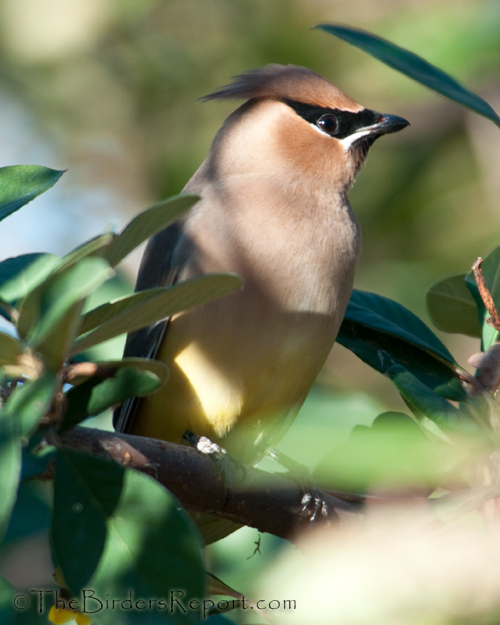 Cedar Waxwing photos by Larry Jordan
Cedar Waxwing photos by Larry Jordan
Cedar Waxwings are one of three birds in the family Bombycilla which also includes the less common Bohemian Waxwing and the Japanese Waxwing which is listed as Near Threatened (NT). The Cedar Waxwing has actually been increasing in numbers over the last twenty years in North America.
Waxwings eat predominately sugary fruits year round but add insects to their diet in the summer. They are a nomadic species, following the ever changing distribution of ripening fruits like this Firethorn (Pyracantha) found here at Christmas time.
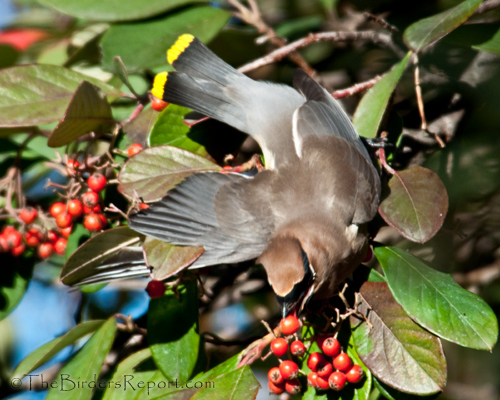
They will typically hang upside down when picking berries and sometimes use some pretty interesting maneuvers to get at their target fruit.
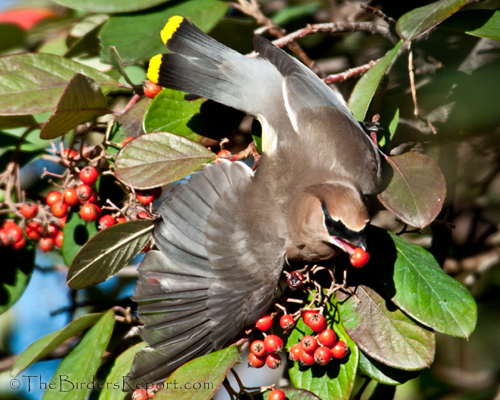
I thought this bird might fall right out of the bush but he kept his balance …
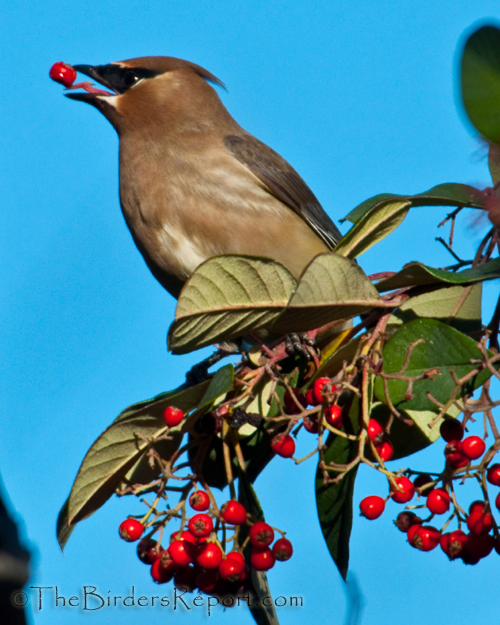
and kept right on eating!
To see more great sky photos, check out SkyWatch Friday. For more bird photos you’ve got to go to Bird Photography Weekly!

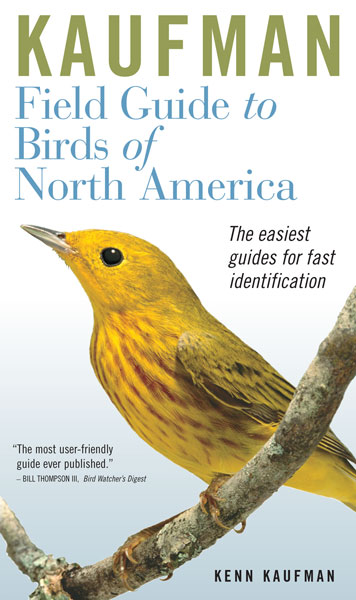
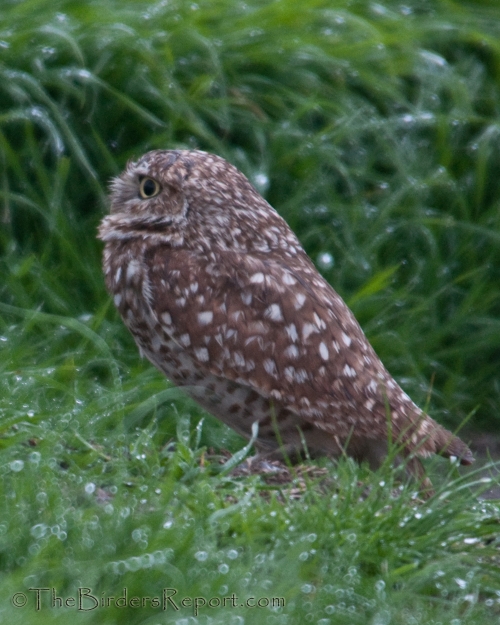
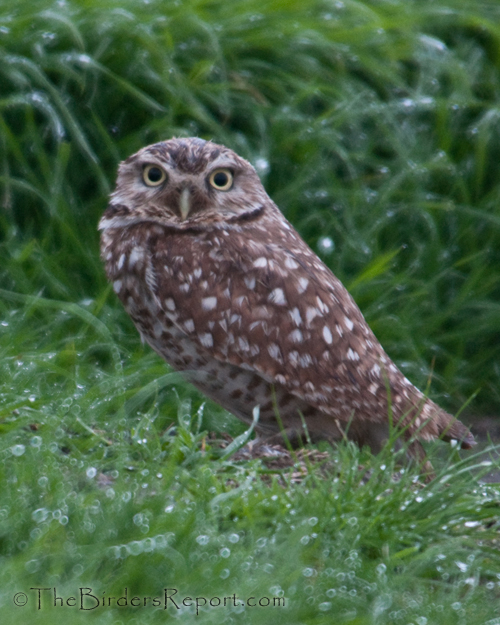
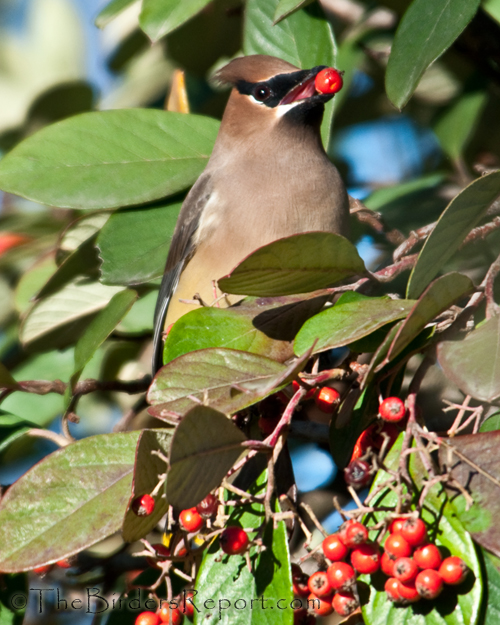



Social Media Connect